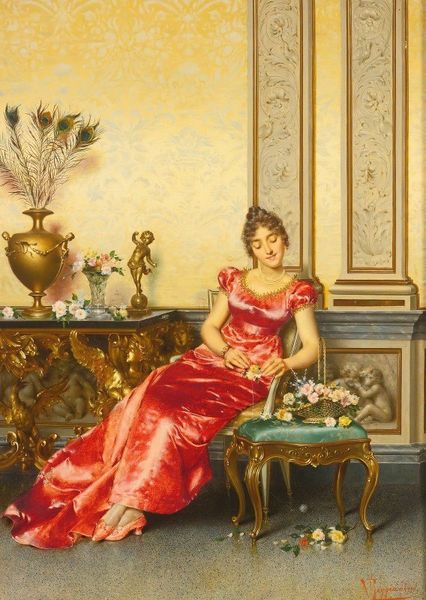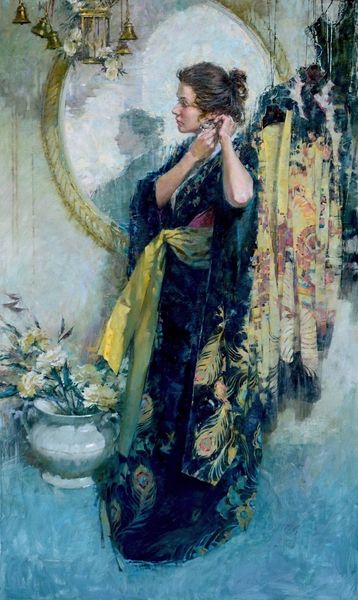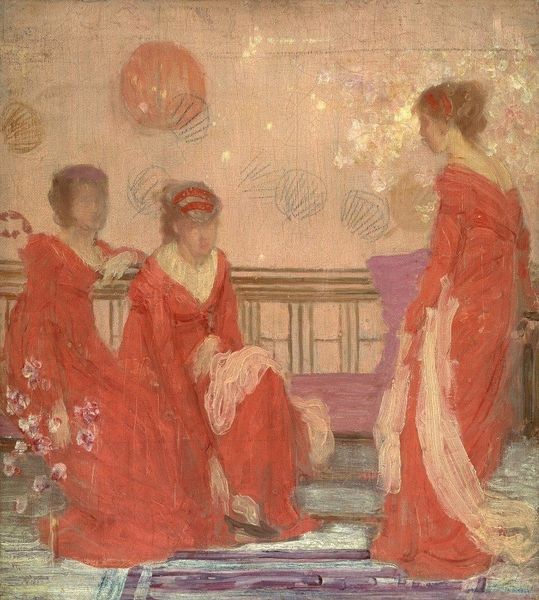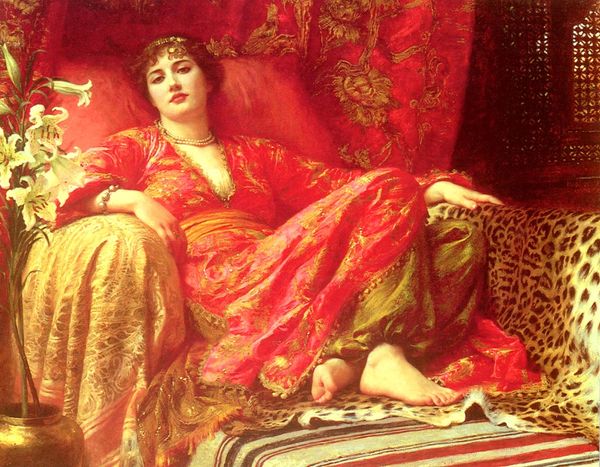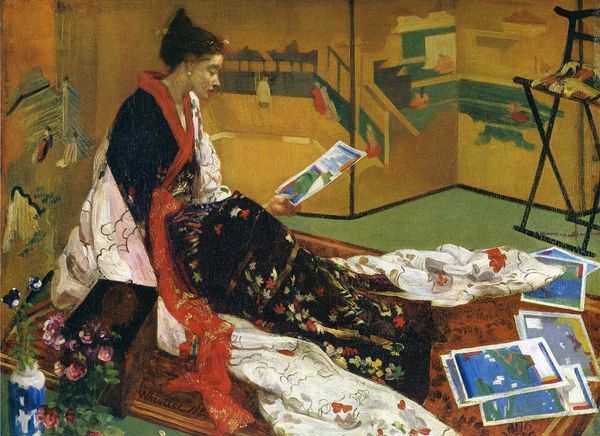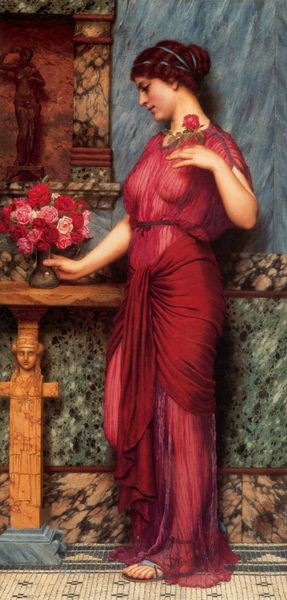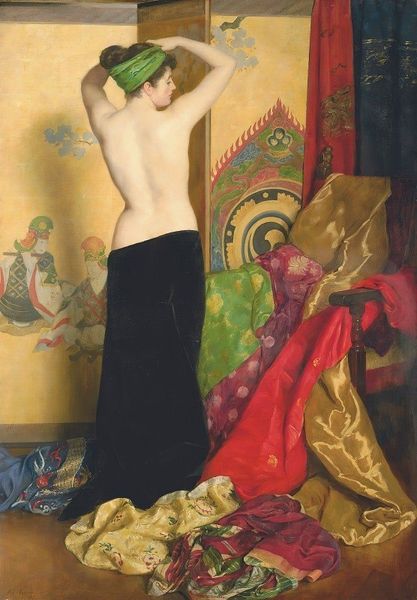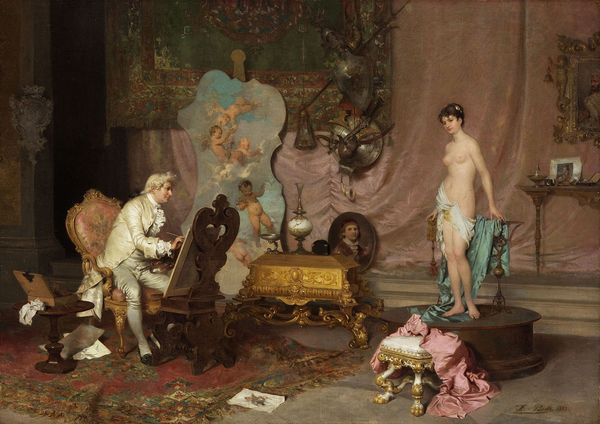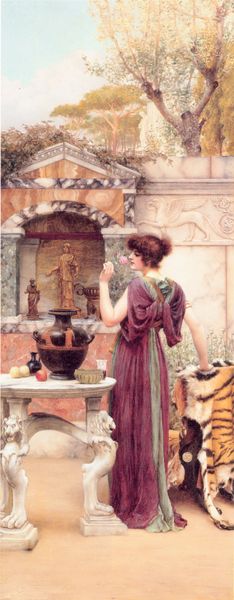
#
portrait
#
abstract painting
#
flower
#
possibly oil pastel
#
oil painting
#
studio composition
#
neo expressionist
#
acrylic on canvas
#
plant
#
naive art
#
painting painterly
#
painting art
#
chaotic composition
#
female-portraits
Dimensions: 71.8 x 105.4 cm
Copyright: Public domain
Curator: Here we have "Autumn Flowers" by Jehan Georges Vibert. It currently resides in a private collection, but let’s delve deeper into it. Editor: My first impression is of a carefully arranged tableau. The color palette, dominated by warm golds and reds, contrasts starkly with the disturbing detail of that polar bear rug. The juxtaposition feels unsettling, a blend of luxury and colonial dominance. Curator: The context is crucial here. Vibert was known for his anecdotal scenes, often satirizing clerical life. While this work isn't explicitly satirical, the opulence reflects the social values of the late 19th century, an era of burgeoning wealth and imperial expansion. It’s about class and taste. Editor: Precisely! The flowers, arranged by this woman in her fashionable kimono-like dressing gown, are not just decorative. They are performative, symbolic of cultivated beauty but also a reminder of nature subdued and controlled by privilege. Even her gown is constructed to remind one of an imperial possession from Japan. Curator: It's interesting how the composition directs our gaze. The woman's gesture with the scissors, as though shaping or pruning the blooms, implies human control over the natural world. There’s also the matter of the interior itself, a constructed space that broadcasts wealth. Editor: That control extends beyond aesthetics, doesn’t it? The bear rug…the very space…It signifies dominion. The artwork, though beautiful on the surface, echoes a system of exploitation. Consider whose lands these decorative objects originated from, who paid the price. Curator: You are quite right. Think, too, about where paintings like these hung: private drawing rooms in sprawling estates, reinforcing these exact social and economic structures through art. The consumption of luxury items, and even the artistic representations of them, sustained certain social and political positions. Editor: Yes, a complex interplay of beauty and brutality. The artist captured a specific moment of historical self-regard, however inadvertently offering insight into what it cost to acquire all that opulence. Curator: Thinking about this from the standpoint of the public consumption of images, "Autumn Flowers" perhaps served to affirm and celebrate a world of power and class distinctions. We might now find in this artwork ways of interrogating the system of inequality that the art quietly promoted. Editor: Reflecting on this, it makes one critically consider the role art played – and still plays – in bolstering certain social orders. Hopefully, by engaging in dialogue, we can recognize the need for a more egalitarian perspective within both artistic creation and critical assessment.
Comments
No comments
Be the first to comment and join the conversation on the ultimate creative platform.
